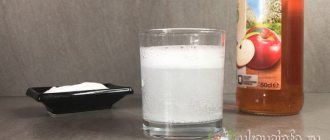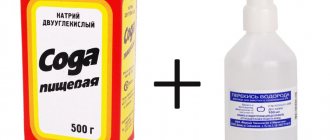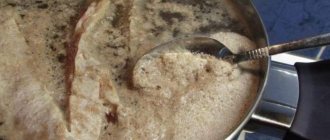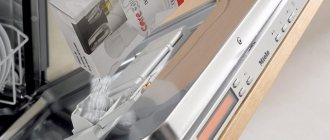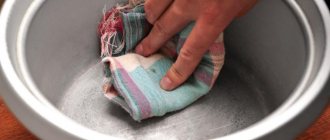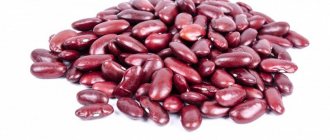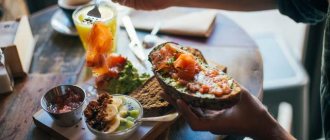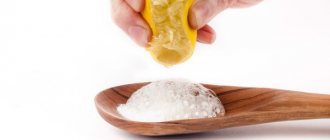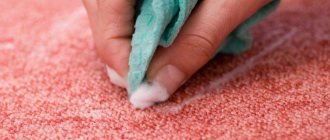Since ancient times, peas have occupied a fairly significant role in the human diet. This legume has always been famous for its nutritional qualities, nutritional value, and rich taste.
India and China in ancient times associated peas with wealth and fertility. Greece and Rome gave it a special role among all other products, preparing it even for royalty.
To this day, the abundance of dishes from this culture is amazing. Every day, the plants prepare such delicious dishes from its fruits: soups, cereals, cutlets, sausages, etc. Abundance has one thing in common: proper soaking of this cereal.
Disadvantages of the method
If the rules for soaking legumes with baking soda are not followed, the finished dish may acquire an unpleasant soapy aftertaste. That's why:
- it is necessary to strictly observe the proportions when preparing the soda solution;
- Do not leave the product in water longer than prescribed.
A long stay in water causes beneficial substances (B vitamins) to be washed out of peas and beans, and fermentation starts in hot weather.
Advice. To avoid the unpleasant taste of soda, after soaking, the beans should be thoroughly rinsed under running water several times.
Soak the peas
Correctly soak peas according to the following scheme:
- take the required amount of grains, prepare it (sort, rinse);
- then fill it completely with cold water;
- add a small amount of NaHCO3 powder and stir. Based on 2 tsp. sodium bicarbonate/100 g. peas/1.5 l. water.
The soaking method avoids the problem of flatulence.
Oil
A small piece of butter or a few tablespoons of vegetable oil is added while boiling. An oily film forms on the surface of the liquid, creating a kind of “lid”.
Using regular butter, this process can be significantly accelerated (Photo: pixabay.com)
Thanks to this, the temperature under the “lid” increases, and the peas boil much faster.
Quickly Cook Peas with Baking Soda
Modern food manufacturers provide customers with a huge selection of legumes, among which peas are especially popular and in high demand.
Cooking peas does not always take a lot of time, there are a few simple tips that will help speed up this process
However, due to various pre-processing methods, preparing it sometimes forces cooks to face certain difficulties. The beans take a long time to cook, are poorly cooked, and remain tough. It is impossible to make puree or full-fledged soup from them. There are several cooking methods, one of which involves using the familiar baking soda.
Preparing puree and porridge
As for preparing pea puree or tender pea porridge, it should be noted that the beans must be completely boiled so that the finished dish has a uniform consistency. There are several ways to prepare peas for heat treatment.
Long-term soaking means keeping the peas in water for at least 12 hours, after which the beans are washed and set to cook, pouring broth or plain boiled water so that it rises at least 2 fingers above the peas.
Immediately after boiling, add soda powder at the rate of 2 tsp. for 2 liters of water.
You should scoop the powder into a spoon so that the spoon is full, but not heaped. Otherwise, the taste of the dish will be spoiled.
Before you start cooking pea porridge, the beans should be thoroughly rinsed under running cold water.
At first it will be cloudy and therefore the procedure should be continued until the water becomes completely clear.
Now you can soak the peas with soda for several hours, then put the pan on the fire and put the washed peas in it, pouring clean boiled water over them. After boiling:
- add 50 g of cream or 2 tbsp. l. vegetable oil;
- add no more than 1/3 tsp. soda;
- cook for at least 40 minutes.
The dish should be salted 5 minutes before it is ready. Oil not only helps to quickly cook the beans and makes mashed potatoes or porridge softer, but also gives it a special aroma. The pea side dish is served with meat, or as a separate dish.
Why add soda to peas?
It is not recommended to wash vegetables and fruits with aggressive household chemicals. Firstly, it reduces the beneficial properties of the products. Secondly, many synthetic substances are poorly washed off with plain water, so the risk of them entering the body is high.
But washing products of plant origin is still necessary. It allows you to remove contaminants hazardous to humans from the surface:
- harmful chemicals: nitrates, pesticides, preservatives, ripening accelerators;
- pathogens left behind by birds and animals;
- mold fungi, especially quickly affecting leaf crops;
- helminth eggs that fall on fruits and vegetables during collection along with the soil or during transportation.
On a note. Infectious contaminants (viruses and bacteria dangerous to humans) are typical for products on the shelves of markets, shops and chain supermarkets, where many people touched them before purchasing them.
https://www..com/watch?v=ytpressru
Rinsing under regular running water does not give the desired result. Traces of toxic chemicals dangerous to humans, bacteria, mold spores and parasite eggs remain on the skin.
- Wash your hands thoroughly with soap and water before handling food.
- Choose a water temperature that roughly matches the temperature of your vegetables and fruits.
- For fruits with delicate skin, it is not advisable to use hard sponges and brushes. Such devices are suitable only for root vegetables: potatoes, carrots, beets, radishes. In other cases, a soft kitchen sponge is sufficient.
- It is not recommended to use laundry soap and regular dishwashing detergents.
Attention! American microbiologists claim that when temperatures change, pathogenic organisms from the surface easily penetrate deep into the fruit.
Why are pesticides dangerous?
Almost all fruits and vegetables that you can buy today are chemically contaminated. In other words, they contain chemicals, including a range of pesticides (a group of substances used in agriculture to control pests):
- herbicides (for weeds);
- fungicides (for fungal diseases);
- insecticides (for insects);
- zoocides (from rodents).
We invite you to familiarize yourself with Salads with fresh honey mushrooms
All these compounds are dangerous for humans, but inevitably accumulate in fruits, leafy vegetables, root vegetables and other plant foods. For example, they form a sticky coating on the fruit skin. In high doses, they can cause poisoning, cognitive impairment and a number of other health problems.
Even so-called organic products do not guarantee the absence of harmful chemicals. According to recent studies, farmed vegetables and fruits also contain pesticides. True, in lower concentrations: 7% versus 35%.
That is why it is advisable to supplement thorough washing of plant products under running water with various chemical neutralizing agents. Most often, experienced housewives use a solution of table salt, vinegar, hydrogen peroxide and, of course, baking soda for these purposes.
How does baking soda work?
Why is rinsing fresh produce in baking soda/tea soda water a good idea? Here are a number of advantages of this simple tool:
- thanks to its disinfectant properties, it kills pathogens on the surface of vegetables and fruits;
- neutralizes and washes away chemical agents due to its strong alkaline reaction;
- returns natural color and aroma to food;
- successfully copes with fungus and the beginnings of rot on the skin;
- breaks down the eggs of worms (destroys their shells);
- eliminates the unpleasant odor of stale fruits and vegetables (if they have been near rotting products for a long time), as well as the smell of the refrigerator;
- removes waxy coating from the surface of fruits with thick skin.
Is it harmful to wash fruits and vegetables with soda (or soak them in a soda solution) before eating? No! This simple technique guarantees the sterility of fresh fruits and vegetables and allows you to protect yourself and your family.
We suggest you familiarize yourself with How peas grow and what is needed for growing?
Baking soda to make the tea blacker.
Algorithm of actions: how to use soda
The use of soda should be based on the size and type of product.
It is convenient to wash individual large specimens (apples, pears, zucchini, peppers, tomatoes, cucumbers and even potatoes) under running water with a small amount of soda.
Algorithm of actions:
- Rinse fruits or vegetables under warm running water.
- Place 1/2 tsp on your palm or clean sponge. baking soda.
- Rub the skin of the fruit with this mixture for 30–60 seconds.
- Rinse off traces of product with water.
https://www..com/watch?v=ytcreatorsru
For small vegetables, berries, fruits, as well as greens (lettuce, dill, parsley), it is better to use a soda solution.
- Rinse the food in the sink under running water to remove visible contaminants: dust, soil particles, etc.
- In a separate capacious container, prepare a solution at the rate of: 1 tbsp. l. sodium bicarbonate per 1 liter of lukewarm water. Mix thoroughly.
- Place the food in this container and rinse for a minute or two.
- Rinse again with running water to remove any remaining baking soda from the surfaces.
This method can also be used immediately for a large number of large vegetables and fruits that are inconvenient to process directly in the sink.
Soak
Berries (grapes, strawberries, raspberries, plums, cherries, cherries, etc.) and leafy greens require more careful processing. The same can be said about the pubescent fruits of peaches and apricots, as well as kiwi and pimply varieties of cucumbers. For them, it is better to use the method of soaking in a baking soda solution - it guarantees maximum removal of pesticides.
- Rinse vegetable berries or greens under the tap.
- To soak vegetables and fruits you will need a more concentrated soda solution: 1 tbsp. l. for 1 liter of cool water. Before placing the greens in a disinfectant liquid, it is advisable to sprinkle them with sodium bicarbonate along the entire length of the bunch.
- After 15–20 minutes, rinse the food thoroughly by placing it in a colander.
On a note. For leaf lettuce, it is important to use cold or room temperature water (and low pressure) so as not to damage the structure: under the influence of heat, the product quickly loses its crispness and juiciness.
Longer soaking serves another purpose - to rid vegetables and fruits of nitrates. For example, early cucumbers and tomatoes are often left in a saucepan with water for 30–50 minutes so that harmful substances are transferred into the water.
Lettuce leaves, as well as basil, dill, parsley and other fresh aromatic herbs can be kept not only in soda, but also in a solution of table salt (4 tablespoons per 1 liter of water) or lemon juice (1/2 lemon per 1 l).
Why are peas soaked in soda?
Exactly how much soda do you need?
Baking soda is one of the safest food disinfectants. Therefore, even exceeding the NaHCO₃ concentration indicated in the recipes above (up to 1 tablespoon per liter of water) will not cause harm to health. Of course, no one canceled the final rinse with water.
Soap solutions (laundry soap and dishwashing detergents) are washed off much less easily and can enter the body, causing indigestion, poisoning and other troubles.
It is no coincidence that store-bought products for processing vegetables and fruits, which claim to be environmentally friendly and safe for humans and the environment, often contain baking soda.
We suggest you read Where to plant peas
Reviews
Marina, 31 years old. The recipe was recommended by a neighbor next door. She soaks all purchased vegetables, including dill and parsley, in a soda solution. Simple and harmless. About twenty minutes before use, I take the tomatoes out of the refrigerator and leave them in water with one spoon of baking soda. Simple and safe.
Angela, 42 years old. I have a very weak digestive system - the slightest bacteria is enough for symptoms of poisoning to appear. Moreover, my husband eats the same food as me, but everything is fine with him. So I have to wash my food very carefully. A pack of soda is always on the sink. This is my lifesaver. Without it, I can’t even imagine how I would wash fruits and vegetables. And even more so with strawberries.
Valentin, 47 years old. I'm very afraid of germs. I always go to work with antiseptic in my pocket. But what to do with my favorite pears and apples? You look at how they are crushed in the hands of other buyers, and you feel uneasy. I read that viruses and bacteria cannot tolerate the alkaline environment that baking soda so successfully creates.
Irina, 25 years old. Since childhood, my mother taught me to thoroughly wash plant foods before eating. I got used to cleaning oranges and lemons with a sponge and a drop of baby dishwashing detergent. But what to do with lettuce and grapes? I can't live without these products. Soda saved the day; a colleague advised me to use it.
She said it when I complained about the whitish film on the grapes - for some reason that’s the only one they sell now.
Now I just take an enamel bowl, dilute a handful of baking soda in it and place the bunch there for about thirty minutes, so that the liquid completely covers the berries.
Then I transfer it to a colander and wash off the remaining lye with water. After this treatment, the grapes only taste better - without this strange bitterness.
How to make any peas boil - without soda and soaking
We were taught that peas should be soaked for several hours and then cooked. Otherwise it will remain tough
Others used baking soda to speed up the cooking. Indeed, there is such a technique. A small pinch of baking soda is added to a pan of boiling water in which the peas are cooked. And a miracle happens - the peas are boiled within 20 minutes.
Read also: Repost: what is it and how to do it
But not everyone has probably heard about this method, when neither soda nor soaking is needed. And this method is as easy as pie!
What should be done? First of all, rinse the peas before cooking. It often contains a lot of unnecessary “garbage”. Place the washed peas in a pan with cold water. Cook from the moment of boiling for 7 minutes.
And now the “secret” of quick cooking - add another glass or half a glass of cold water to the boiling water with peas. Exactly cold! And cook for another 7 minutes, after which you can throw in the ingredients for the soup - potatoes, frying, and so on.
And if you are simply cooking pea puree, then 20 minutes of cooking with the effect of adding cold water is enough to turn it into an almost puree-like state.
You can also use a blender to achieve maximum homogeneity. Or crush with a masher to make a puree. And now the recipe for an interesting dish - Pea soup in an edible bowl.
Cook peas according to our recipe. Can be made with either water or meat broth. But be sure to use cold water or cold broth, as described above. Then the process of cooking peas will not take more than 15-20 minutes.
Ideally, you should use smoked ribs broth. But just half-smoked sausage or hunting sausages, or any raw smoked sausage will do. Add diced potatoes, sausage and fried carrots and onions to the boiled peas. Put a piece of butter. Another 10 minutes and cover with a lid.
Take a loaf of black bread and cut it in half. We scoop out the crumb, cut it into small cubes and dry it in the oven. Place a finely chopped green onion in each half of the bread. And fill it with pea soup.
You can add toasted diced bread. The dish is ready and can be served immediately. Serve on the table on a plate. And the “plate” of bread itself can be eaten along with the soup.
Why is it difficult to cook peas?
The legume plant belongs to dietary dishes. Previously, when people had not yet thought about the problems of dietary healthy eating.
But this culture was abundantly represented among the tables of people of that time. They used it to make porridge, stew, and even baked snacks.
Recommended for you:
Delicious soda cake layers: homemade recipes
There were no difficulties when cooking beans, but then it was cooked using a stove. Slow simmering over an open fire helped the dish reach the required readiness.
Now only remote villages have such technologies. Therefore, women have to use other methods of preparing this porridge.
What is the reason for the slow cooking of the beans? It is very rich in starch and protein compounds with almost no moisture. Therefore, preparing it for the boiling procedure, simmering, baking or frying depends on the desired end result.
What is soda for?
The presence of sodium bicarbonate softens not only hard water, but also what is in it. Legumes soaked in a weak soda solution boil faster. Due to this, cooking takes much less time.
Well-cooked peas, beans, etc. are easier for the human digestive system to digest. Accordingly, the risk of bloating and bowel dysfunction is reduced.
The main reason why legume dishes cause flatulence in many is the high content of indigestible fiber and complex oligosaccharides. The fact is that when sugar molecules are broken down in the stomach, gas is released.
When soaking, some of the sugars go into the water, which is drained before cooking. After this, the peas, beans or lentils are thoroughly washed and, filled with clean water, put on fire.
Attention! The method is suitable for dried legumes and fresh, just harvested ones. The canned product does not require additional soaking, since it has already gone through the pre-processing stage.
How to soak peas for soup
When the peas do not soften after 2 hours, and the pea soup needs to be prepared quickly, you will need to follow this recipe:
- Prepare a glass of cereal. Sort and wash the peas;
- Pour two liters of water over the pea cereal, then put it on the stove;
- Add 1 tablespoon of baking soda to boiling water;
- Stir the mixture thoroughly, remove the pan;
- Then cover the dish with a lid and wait half an hour;
- After the required period, drain the water, rinse the cereal thoroughly, and then fill it with cold water;
- Add salt, place the workpiece over medium heat, and cook for about 20 minutes;
- Next you should add black pepper.
You just need to add the necessary ingredients. Enjoy the finished soup!
How to cook pea porridge
For soft, nutritious pea porridge, you will need to pour a glass of cereal with a liter of water. Then put the pan on the fire, when the water starts to boil, remove the container from the stove, add soda.
Recommended for you:
Baking soda or baking powder, can it be substituted?
Sodium bicarbonate should be poured at the rate of 2 tsp/2 liters of water. Cover the porridge with a lid and wait for half an hour. Then the water is drained, the mixture is washed, and the porridge is cooked.
Butter, which should be added after cooking, will help the cereal cook. It will also help the dish become aromatic and tasty.
If you are on a diet or lack butter, replace it with sunflower oil. However, it will give the same taste to this dish.
If you want to maintain the shape of the cereal particles, then add the powder after boiling for half an hour, then the beans will retain their round shape. To obtain puree, use a blender or masher.
Classic technology
Every self-respecting housewife should know how to properly soak peas in water. There is a classic recipe that is very simple and does not take much time.
The steps are very simple, so they can be entrusted to any family member if you are busy with other things.
- Place the required amount of peas in a deep bowl.
- We clean it of excess debris and carefully sort it out.
- Bad peas should be thrown out immediately so that they do not spoil the overall taste of the dish.
- After you have completely peeled the peas, you need to rinse them very well several times.
- Pour the peas back into the bowl and fill with cold water. The water level should completely cover all the peas.
- Leave for 6 hours in the refrigerator or in a cool place.
- After the peas are soaked, the water will need to be completely drained.
- Again, wash the peas several times under running water.
After such actions, peas can immediately be used in preparing your favorite soup or porridge.
If you want to slightly reduce the soaking time, you can change the water several times. But you shouldn't do this too often. It will be enough to change the water 2-3 times during the entire period.
Reviews from people
Elena
Girls, maybe someone will find it useful! I soaked the peas for 12 hours before cooking. Now I added soda, the cereal swelled in just half an hour. The slow cooker cooked it in an hour. Previously, the same variety of legumes had to be tormented for three hours, but it was still hard. It's so simple!
Faith
Whenever I cooked pea soup or porridge, I couldn’t cook the cereal quickly. Even pre-soaking didn't help much. About a year ago, my aunt told me a secret. Thanks soda. Now I just wash the cereal and pour it with boiling water and soda. I've been waiting for an hour. I just wash it well. You can cook!
Tanya
I always used soda, my grandmother told me. Significantly reduces the cooking time for pea porridge. The family really loves soup and pea porridge. I don't know what I would do without baking soda.
How long does it take to cook unsoaked peas?
To understand whether you have time to prepare such an appetizing dish for lunch, take into account how long it takes to cook the peas
in soup without
soaking
.
For it to boil well in a saucepan, it will take from 1.5 (crushed) to 2-2.5 hours. Whole peas will have to be cooked
for up to 3 hours.
Interesting materials:
How to add Acronis to a flash drive? How to add an avatar on Snapchat? How to add a telegram bot to a group? How to add someone else's Story to your Story? How to add a birthday to Google calendar? How to add a friend in Red Dead online? How to add a friend in Sea of Thieves? How to add elements in Visual Studio? How to add another user to PS4? How to add flibusta to Fbreader?
Making soup
Sodium bicarbonate can be added to pea or bean soup even during the cooking process. Our great-grandmothers used this method.
Housewives often add too much soda, which spoils the taste of the finished dish. To make pea soup truly tasty, you must strictly adhere to the norm: 1 tsp is enough for a two-liter pan. no slide.
When cooking puree soup, add soda 10 minutes after boiling.
If you want the peas to remain intact, but at the same time become soft, add sodium bicarbonate after re-boiling the broth with the beans.
Help it boil down
Pea grains can be boiled quickly, taking into account the following factors:
- When purchasing it, it is better to choose a crushed product. The nutritional benefits of the dish will be similar, but less time will be spent.
- Chefs say Idaho beans cook the fastest.
- The grains should be thoroughly washed, transferred, and then cold water is poured into them. Then leave it for 8-10 hours.
- When preparing, it is preferable to use drinking soft water.
- If you need to cook the beans faster, roast them for 15 minutes.
- Simmering of the dish will be better if you use thick-walled cookware. It is better to use the soaking water.
